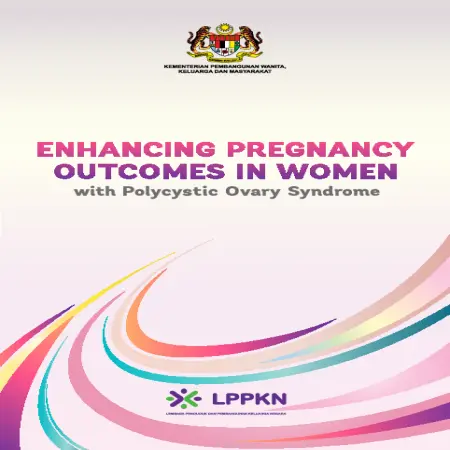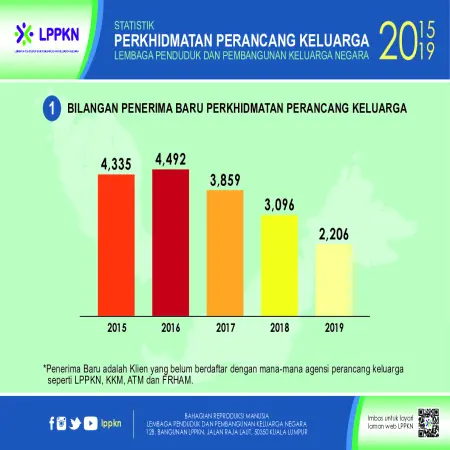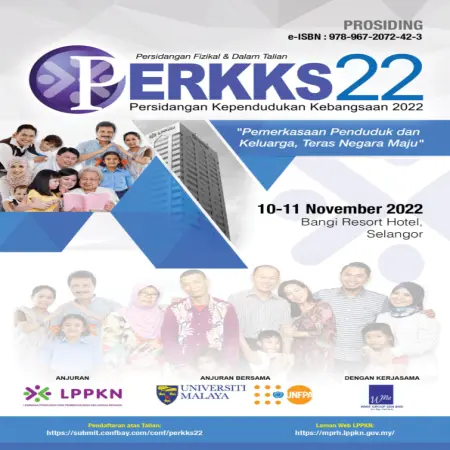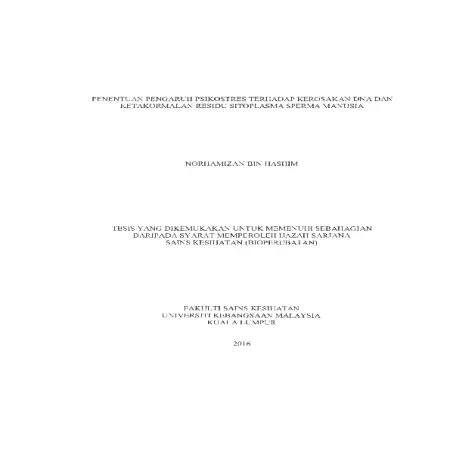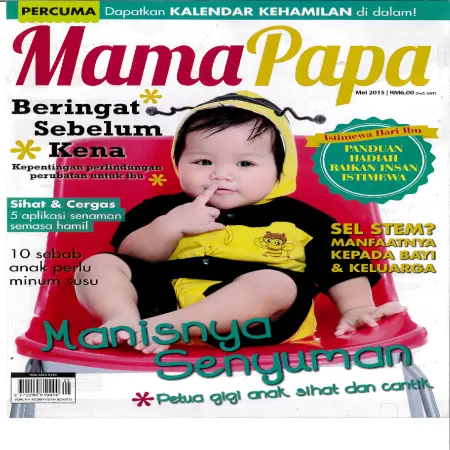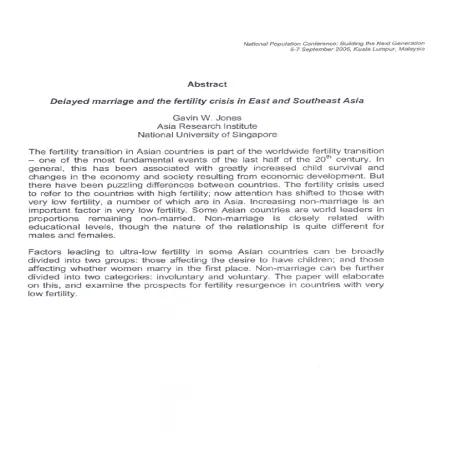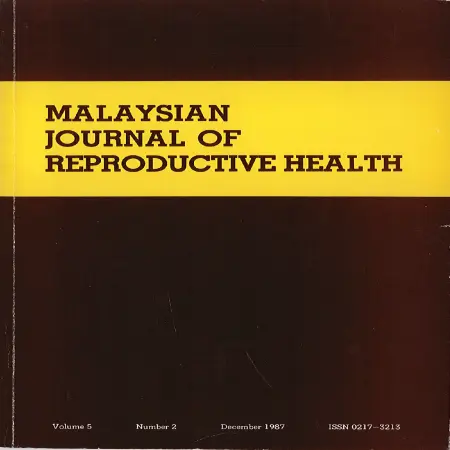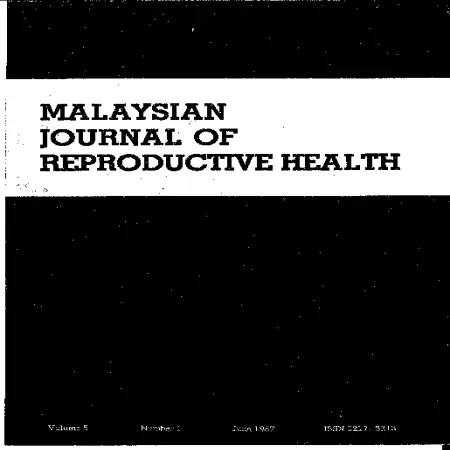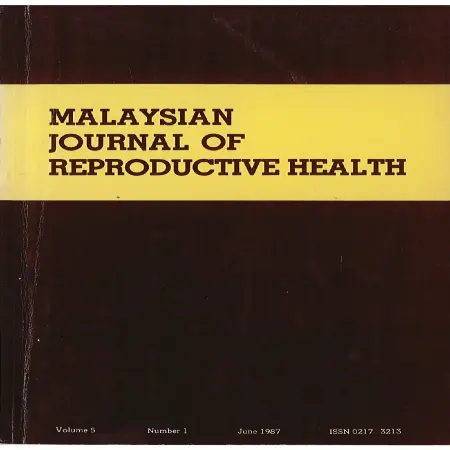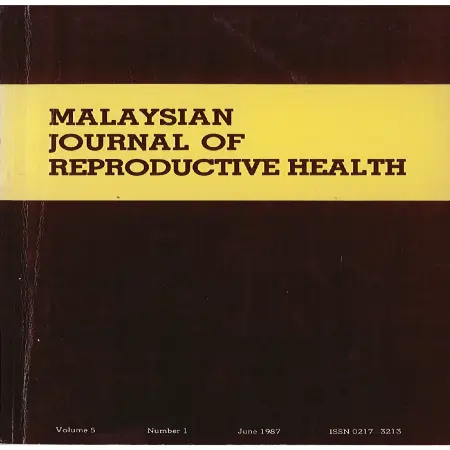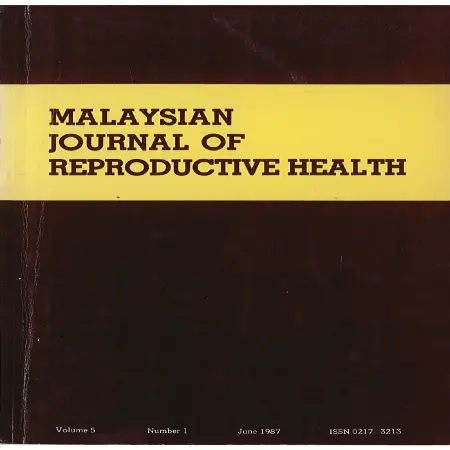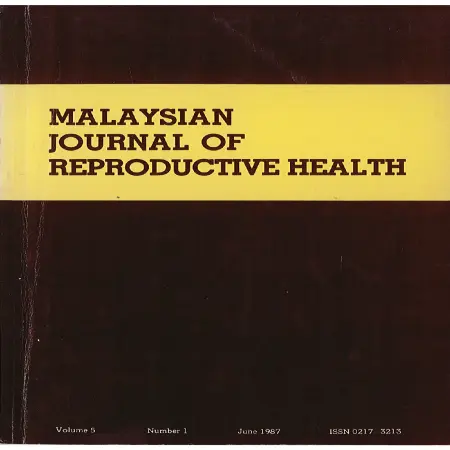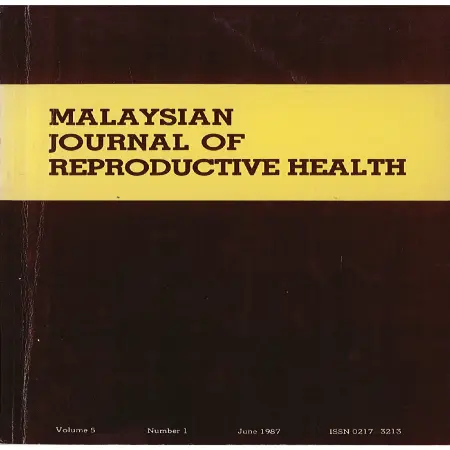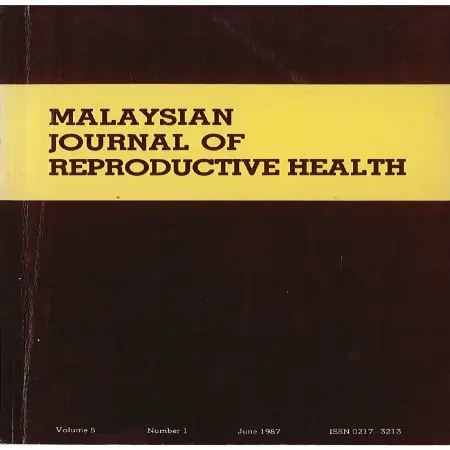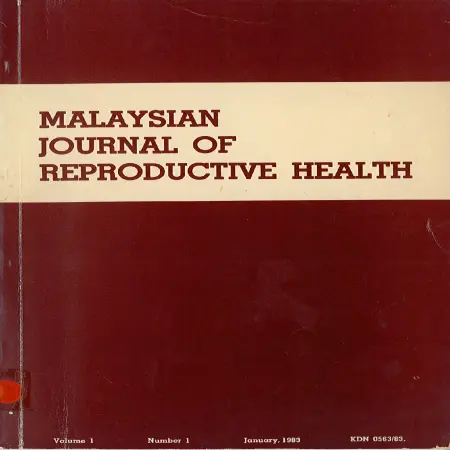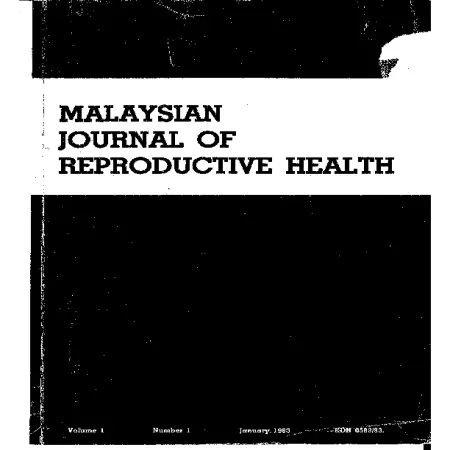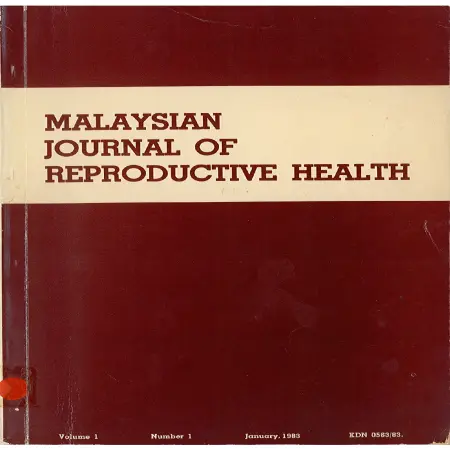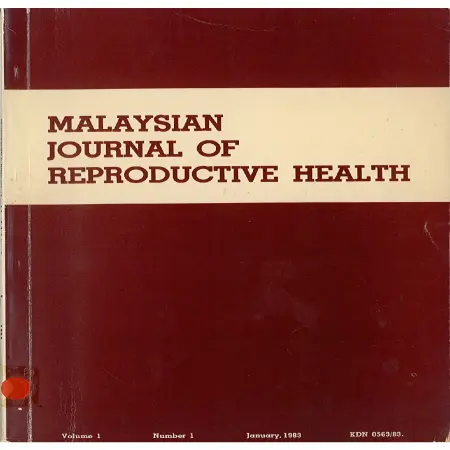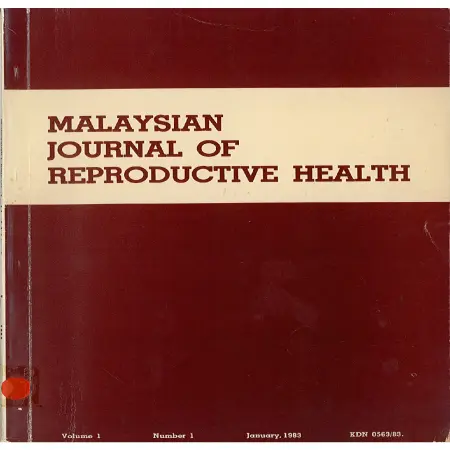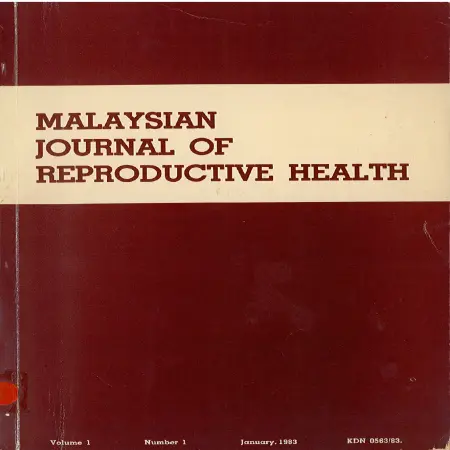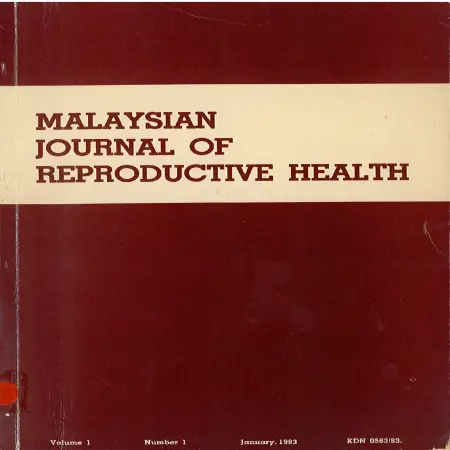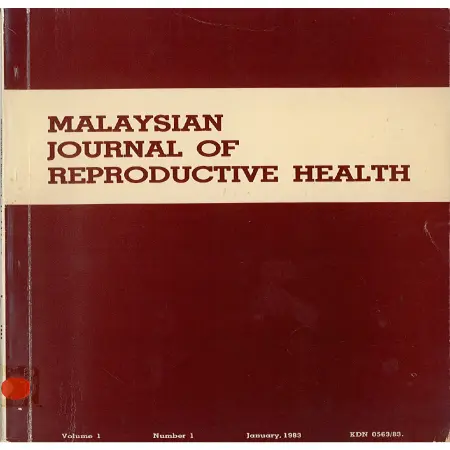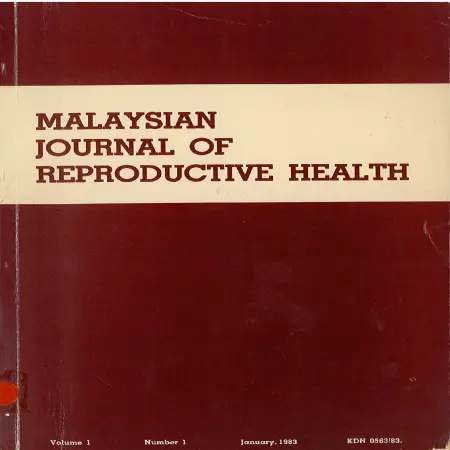Browse by Subject
Results for Search : "618 Gynecology, obstetrics, pediatrics & geriatrics"
2023 (1)
|
|
Enhancing Pregnancy Outcomes in Women with Polycystic Ovary Syndrome
Item Type: Research Report
Editor:
Year: 00/01/2023
Abstract: Polycystic ovary syndrome or known as polycystic ovarian syndrome (PCOS) is an endocrine disorder and one of the main causes of anovulatory infertility in women of reproductive age, which is 15 to 49 years (Balen et al., 2016). The main characteristics of women with PCOS are ovarian dysfunction, hyperandrogenism and polycystic ovaries (Balen and Michelmore., 2002). This syndrome is associated with metabolic syndromes such as obesity, insulin resistance, diabetes mellitus type 1 (Barthemess and Naz., 2014) and arteriosclerosis (Orio et al., 2004).
The general objective of this study is to identify the demographic characteristics, clinical and medical history, of PCOS sufferers as well as appropriate treatment methods among clients seeking fertility treatment at the LPPKN Subfertility Clinic.
This study is an experimental, case control study involving female clients who come to seek fertility treatment at the LPPKN Subfertility Clinic. The chosen location is LPPKN Headquarters, Kuala Lumpur. Every female client who attends needs to meet the patient selection criteria, namely a Malaysian couple, trying to conceive for more than a year and aged between 25 to 38 years old. Every patient who faces subfertility problem is divided into two groups, namely PCOS and no PCOS.
Patients who are eligible and agree to participate in the study have gone through at least five (5) series of appointments with medical officers and nurses. A total of 167 patients participated in this study with an average age of 30 years.
|
|
|
|
2022 (2)
|
|
Statistik data perkhidmatan perancang keluarga LPPKN tahun 2015-2019
Item Type: Report
Editor:
Year: 00/00/2022
Abstract: National Population and Family Development Board Malaysia (NPFDB) have prepared a statistic report on family planning services at the NPFDB level according to the number of new recipients, type of contraceptive, state, age group, ethnicity, strata and employment status for 2015 to 2019. This report only consist new recipients, which is new clients who have not registered with any of family planning agency such as NPFDB, Ministry of Health (MOH), Malaysian Armed Forces (ATM) and Federation of Reproductive Health Associations Malaysia (FRHAM). The breakdown of statistic report by type of contraceptive have included implant, injection, condom, pill, intrauterine device and non-modern methods. Meanwhile, the breakdown of family planning data by age have covered the range of 15 years to 49 years. The breakdown of data by ethnicity also have included Malay, Chinese, Indian, other bumiputera and other ethnicities. These statistic data were also have provided by strata (urban and rural), employment status (employed and unemployed) and education breakdown including college/ university, secondary school, primary school and non formal education.
|
|
|
|
|
|
Wanita dan menopos: satu kajian literatur
Item Type: Book Section
Editor:
Year: 00/00/2022
Abstract: The Malaysian Ministry of Health has defined menopause as a situation of menstrual loss that will occur among women aged 45 to 55 years. However, it is undeniable that menopause can also occur before a woman turns 40 due to health factors. Past studies on postmenopause have focused on physical health aspects such as effects on hormones, sleep and medical support given to postmenopausal women.
|
|
|
|
2020 (1)
|
|
Seroprevalence and factors associated with chlamydia trachomatis Infection among subfertile couples attending local public subfertility clinic
Item Type: Thesis
Editor:
Year: 00/00/2020
Abstract: Chlamydia trachomatis is one of the agents that cause the sexually transmitted infections called chlamydia. People practicing risky sexual behaviours such as having multiple sex partners, exercising sexual intercourse at an early age, and undergoing unprotected sexual
intercourse (without condom) with casual partners, are at risk of getting Chlamydia trachomatis infection. One of the significant, long term implications of risky sexual behaviours and sexually transmitted infection is infertility problems. The objectives of this study are to determine the seroprevalence of Chlamydia trachomatis (CT) among subfertile couples (husband and wife) of The Lembaga Penduduk dan
Pembangunan Keluarga Negara (LPPKN) Subfertility Clinic and the factors associated with it (i.e. socio-demographic, duration of marriage, infertility factor, knowledge, attitude, practice of risky sexual behaviour (RSB) and predictors of Chlamydia trachomatis infection). The study is a cross-sectional study involving 112 infertile couples who underwent fertility treatment at LPPKN Subfertility Clinic from February 2018 until February 2019. Sociodemographic factors, duration of marriage, infertility factor, knowledge, attitude and practice (KAP) of risky sexual behavior (RSB) variables were determined via self-administered
questionnaire that includes close ended questions. Meanwhile, Chlamydia trachomatis antigen and antibody (CT IgG) were determined via Enzyme Linked Immunosorbent Assay (ELISA) and rapid visual immunoassay test kit. This approach is selected to detect past and
current infections of Chlamydia trachomatis through antibody and antigen detection in the blood serum, endocervical swab and urine samples. The response rate of this study was 97.39%. Majority of the respondents were aged between 25-34 years old and dominated by Malay ethnicity. Half of the respondents were among those with tertiary level of education and working in the private sector. In term of duration of marriage, half of the samples were couples who have been married for 3-7 years with majority of them had primary infertility. The female factor was reported to be the most dominant, followed by the unexplained factor and male factor. The seroprevalence of Chlamydia trachomatis among subfertile couples was 22.1% with 14.7% in husbands and 17.9 %, was reported among wives. In terms of knowledge, the results showed that most couples had high level of knowledge
about risky sexual behaviours with a score of more than the mean (> 6) for both husbands and wives. Meanwhile, each husband and wife group had positive attitude towards risky sexual behavior. Approximately, 35.7% of husbands and 12.5% of wives were engaged with risky sexual behavior while a higher percentage of premarital sex was reported among the husbands compared to the wives. The chi-square results showed no association between CT status and socio -demographic factors, marital status and knowledge of RSB among subfertile couples. A significant association was recorded between CT and practices of RSB among couples (p< 0.05) particularly among those with multiple sex partners and husbands who had premarital sex (p<0.05). However, the Binary Logistic Regression analysis showed that none of the selected variables were significant predictors of CT status among the couples (p> 0.05). This study has determined that the seroprevalence of Chlamydia trachomatis (22.1%) and practices of risky sexual behavior among subfertile couples were high. Even though the results have shown no association between the dependent and independent variables, our finding has given an evidence based detection of past infection of Chlamydia trachomatis among
subfertile couples. The practice of RSB has interrelated risk of getting CT and its long term consequences particularly on women reproductive system. Since the awareness on CT among public is considered low, it is crucial to sensitize them about it to ensure early detection and prevention. Therefore, CT screening is strongly recommended to be integrated in fertility work up. treatment and be promoted among sexually active adolescents and those young in age.
|
|
|
|
2018 (1)
|
|
Amalan perancangan keluarga di Malaysia: cabaran dan hala tuju
Item Type: Conference or Workshop Item
Editor:
Year: 00/00/2018
Abstract: Family planning allows people to attain their desired number of children and determine the spacing of pregnancies. It is achived through use of contraceptive method and the treatment of infertility. Proportion of women of reproductive aged 15-49 years who have their need for family planning satisfied with modern methods.
|
|
|
|
2017 (1)
|
|
Malaysian infertile men and women : do they suffer mental health issues?
Item Type: Conference or Workshop Item
Editor:
Year: 00/00/2017
Abstract: This study revealed that Malaysian infertile men and women demonstrated susceptibility to mental health problems that occurs more commonly among women than men. Thus, this study may facilitate fertility facilities to strategize and redesign better intervention for the infertile couples.
|
|
|
|
2016 (1)
|
|
Penentuan pengaruh Psikostres terhadap kerosakan DNA dan ketakormalan residu sitoplasma sperma manusia
Item Type: Thesis
Editor:
Year: 00/00/2016
Abstract: Idiopathic infertility has been correlated with psychostress which can result in abnormality and declining semen quality in men. Nevertheless, direct relationship of semen quality and psychostress is still unclear. Hence, this study was conducted to evaluate the effect of psychostresson semen quality with emphasizing on sperm DNA damage and cytoplasm droplet abnormality. A total of 628 respondents were selected randomly among men aged between 25-45 years old were patient from LPPKN.
|
|
|
|
2015 (1)
|
|
Apa wanita perlu tahu: subur@tidak subur?
Item Type: Article
Editor:
Year: 00/05/2015
Abstract: Fertility is the ability to conceive naturally. As a measure, fertility rate is the number of children born per individual, household or population. Fertility varies according to fertility, i.e. the potential to reproduce (which is influenced by gamete production, fertilization and the ability to conceive long enough). There are several types of ovulation disorders that are 35% of the cause of infertility in women, namely anovulation. Anovulation is a condition where no ovulation process occurs or the egg process is released from the ovaries, oligovulation is an irregular ovulation process that sometimes occurs, sometimes not and the anovulation cycle is a menstrual cycle in which no ovulation process occurs at the cycle.
|
|
|
|
2006 (1)
|
|
Delayed marriage and the fertility crisis in East and Southeast Asia
Item Type: Conference or Workshop Item
Editor:
Year: 00/00/2006
Abstract: The fertility transition in Asian Countries is part of the worldwide fertility transition and one of the most fundamental events of the last half of the 20th century. In general, this has been associated with greatly increased child survival and changes in the economy and society resulting from economic development. But there have been puzzling differences between countries. The fertility crisis used to refer to the countries with high fertility but now attention has shifted to those with very low fertility, a number of which are in Asia.
|
|
|
|
1987 (9)
|
|
Hemorrheology and fibrinolytic response in women taking oral contraceptive pills
Item Type: Article
Editor:
Year: 00/12/1987
Abstract: A study was conducted on a total of 107 women attending the National Population and Family Development Board, Malaysia (NPFDB) Maternity Hospital, Kuala Lumpur. The subjects were divided into 3 groups. Group I and II consisted of woman on a low-dose combined estrogen and progestagen pills for a duration of 3-6 months and 1-2 year respectively. Group III was a control group consisting of women not on pills. A series of tests to evaluate hemorrheology and the fibrinolytic response were carried out. The results obtained showed no definite or significant difference in the two systems for all the three groups investigated. These findings are comparable to those reported by other investigators, implying relative safety of these pills in the local population.
|
|
|
|
|
|
A five-year review of diagnostic laparoscopy and female sterilizations in 52 centers in Malaysia
Item Type: Article
Editor:
Year: 00/06/1987
Abstract: Doctors participating in the Laparoscopy Program of the National Population and Family Development Board, Malaysia return data on all cases of diagnostic laparoscopy and female sterilizations carried in their centres. Data on 2,179 cases of diagnostic laparoscopy and 4,740 cases of female sterilizations for the period 1981-1985 are analysed. States with the highest return rates are Kuala Lumpur Federal Territory, Negeri Sembilan, Johor and Perak. The Specialist Centre of the Board alone accounted for one-third of the cases. Data for female sterilizations are further analysed. Complication rates for laparoscopy and minilaparotomy techniques are low at between 0.5 to 2.5 per 100 procedures. All doctors providing such services should be encouraged to participate in this Program and submit data in order to improve and learn from this Program.
|
|
|
|
|
|
In vitro maturation of immature human oocytes in culture medium containing follicular fluid
Item Type: Article
Editor:
Year: 00/06/1987
Abstract: In clinical IVF programs often immature oocytes are retrieved. Under such circumstances, numerous workers have advocated the procedure of pre-incubation in insemination medium for 12-36 hours, prior to insemination to induce maturation. We describe here the supplementation of follicular fluid in insemination medium to induce maturation of immature oocytes. The culture characteristics of the insemination medium containing follicular fluid appears to be better than the insemination medium without follicular fluid. Previous reports suggest the presence of a meiosis-inducing substance in follicular fluid which could trigger the resumption of meiosis and hence contribute to oocyte maturation. Other factors in follicular fluids which are yet to be elucidated, may also contribute to oocyte maturation. It is concluded that superior culture characteristics can be obtained if immature oocytes are preincubated for 16-36 hours in insemination medium containing 50% follicular fluid.
|
|
|
|
|
|
Maternal reciprocal translocation t(1p;6p) in a couple with recurrent spontaneous abortion
Item Type: Article
Editor:
Year: 00/06/1987
Abstract: G-banded chromosome complements were analyzed from peripheral blood lymphocytes of a couple who had experinced for spontaneous abortions. The karyotype of the husband was designated as 46,XY, while the wife's karyotype was designated as 46,XX, t(1p;6p). Balanced reciprocal translocations appear to be associated with the recurrent spontaneous abortions experienced by the couple. We report here a case of a maternal (1p;6p) reciprocal translocation in a couple with repeated fetal loss.
|
|
|
|
|
|
Effect of centchroman on lipid metabolism in genital organs of female rhesus monkeys (macaca mulatta)
Item Type: Article
Editor:
Year: 00/06/1987
Abstract: Effect of Centchroman (3,4-trans-2, 2-dimenthyl-3-phenyl-4-p (B-pyrrolidinoethoxy)-phenyl-7-methoxy chroman)treatment at 1 and 2.5 mg/kg; for 3, 6 and 12 months on lipids constituents of uterus,cervix and vagina was studied. Centchroman did not cause any consistent pattern of alteration in lipid contents of uterus, cervix and vagina of female rhesus monkey. However, uterine phospholipids were decreased at both the doses and cervical and vaginal triglycerides increases at higher dose. The altered nature of responses in the genital organs may be due to manifestation of estrogenic-cum-antiestrogenic properties of centchroman.
|
|
|
|
|
|
A prospective study of the acceptability of today vaginal contraceptive sponge among Malaysian women
Item Type: Article
Editor:
Year: 00/06/1987
Abstract: Fifty volunteers were selected in a two month prospective study to evaluate the acceptability of the Today vaginal sponge contraceptive among Malaysian women. One participant developed allergic reaction to the sponge and was taken off at an early stage of the study. Fourty- nine participants completed one month follow-up.Thirteen subjects discontinued for various reasons which are related and not related to the sponge. The remaining 36 participants completed the study. Few side effects were observed among the sponge users who completed the trial. One subject complained that the Loop of the sponge hurt her husband's penis. Most of the women who are on the sponges claimed that sexual intercourse is no longer messy. Four subjects claimed that the sponges pontentiated sexual feeling to their male partners. The sponge is generally accepted by the study group, which suggest that the general impression 'Asian Women abhor any form of vaginal contraception' is not totally correct. It is suggested that the contraceptive efficacy of the sponge be evaluated among our women in the future.
|
|
|
|
|
|
Effect of norgestrel and testosterone on male rats
Item Type: Article
Editor:
Year: 00/06/1987
Abstract: Intramuscular administration of Norgestrel, an orally active progestogen, to male rats for 48 days interrupted spermatogenesis and also caused a temporary loss of libido. Testosterone therapy restored libido in progesterone treated rats but not the spermatogenic process. Consequent upon these findings, a new combination of Norgestrel and Testosterone, capable of inducing temporary sterility in male rats, has been evolved.
|
|
|
|
1984 (1)
|
|
Apparent benefit from corticosteroids in bronchopulmonary dysplasia: a case report
Item Type: Article
Editor:
Year: 00/00/1984
Abstract: A case of bronchopulmonary dysplasia complicating the ventilatory management of respiratory distress syndrome is described. The diagnosis was documented by typical clinical radiological and cytopathologic criteria. The infant's abrupt clinical deterioration was reversed by the use of high dosage steroids and attempt at reducing the dose of steroids initially was associated with clinical and radiological deterioration. We conclude that steroid administration seemed beneficial in our patient.
|
|
|
|
1983 (8)
|
|
Malaysian Journal of Reproductive Health (Volume 1, Number 1, January 1983)
Item Type: Book
Editor:
Year: 00/01/1983
Abstract: An official publication of Reproductive Research Centre, National Family Planning Board, Malaysia, in collaboration with the Malaysian Association of maternal and Neonatal Health.
|
|
|
|
|
|
Age of biological maturity of Malaysian girls by ethnicity
Item Type: Article
Editor:
Year: 00/01/1983
Abstract: This study tries to estimate the age of biological maturity of Malaysian girls by ethnicity by employing an indirect methodology. Age at biological maturity is estimated by considering retrospective fertility and family survey data on marriage, first birth, and contraceptive use. The waiting time for the biological mature females to conceive is 3.0 months; 3.2 months among the Malays, 2.7 months among the Chinese, and 2.8 months among the Indians.The maximum age of attaining biological maturity is 20 for all ethnic groups except Indians (19 years). The expected age biological maturity at birth is 15.6 years; 15.3 years for the Malays, 15.4 for the Chinese and 14.8 years for the Indians.The mean age of attaining biological maturity coincides with the expected age of attaining biological maturity at birth.
|
|
|
|
|
|
Determinants of neonatal outcome in a Malaysian Maternity Hospital, 1980-1981
Item Type: Article
Editor:
Year: 00/01/1983
Abstract: The compilation and analysis of basic perinatal statistics in the Maternity Hospital, Kuala Lumpur is described. The study period covers the years 1980-1981. Determinants of neonatal mortality include very low birthweight (<1.5 kg), a gestational age of less than 32 weeks and clinical conditions of asphyxia, bacterial sepsis and respiratory distress syndrome. A proposal for a clinical classification of neonatal mortality is advanced and implications for a wider applicability of this approach is suggested to better evaluate perinatal performance in hospitals all over the country.
|
|
|
|
|
|
The pattern of maternal mortality at Maternity Hospital Kuala Lumpur
Item Type: Article
Editor:
Year: 00/01/1983
Abstract: From 1978 to 1981, there were 70,000 deliveries at Maternity Hospital, Kuala Lumpur. 39 maternal mortalities were encountered during this four year period. The major causes of death were toxemia, hemorrhage, embolism, medical disease in pregnancy, sepsis, uterine inversion, obstetric trauma, Mendelson and pulmonary edema. Avoidable factors were isolated in all the mortalities except in three, one due to infective hepatitis and two due to cardiac disease in pregnancy. The patient was at fault in four mortalities. The need for documenting all maternal mortalities is a priority in this country to make analysis more meaningful.
|
|
|
|
|
|
Office laparoscopic assessment of female fertility
Item Type: Article
Editor:
Year: 00/01/1983
Abstract: The preliminary report details our experience and also serves to evaluate the risk benefits of office laparoscopy for female fertility assessment in 183 subjects. The patients were admitted at about 8.00 in the morning and discharged at 3.00 to 4.00 in the afternoon after laparoscopy has been performed. Only 7.7 percent of the subjects required inhalational anesthetic gases along with a combination of intravenous sedation and local anesthetic infiltration. The pick-up rate for pelvic abnormality is fairly high, approximately 22.4 percent. Difficulties and complications encountered during laparoscopy were minimal and easily overcome.The benefits of laparoscopy overrules assessment and sterilization feature laparoscopy on an 'outpatient basis' as one of its main activities.
|
|
|
|
|
|
Actinomyces-like organisms in the cervical smears of IUCD users
Item Type: Article
Editor:
Year: 00/01/1983
Abstract: Cervical smears of 128 intrauterine contraceptive device users were stained by Gram stain and screened for the presence of Actinomyces-like organisms. Actinomyces-like organisms were observed in 5.5 percent, pus cell in 20.1 percent and yeast cells in 10.2 percent of the smears examined. The average duration of insertion was 8 months. Smears of 103 controls were negative for Actinomyces-like organisms, pus cells were observed in 8.7 percent and yeasts in 4.8 percent.
|
|
|
|
|
|
Problems of neonatal surgery in Malaysia
Item Type: Article
Editor:
Year: 00/01/1983
Abstract: From January 1970 to May 1981, there were 594 neonates admitted to the General Hospital, Kuala Lumpur for surgery. Three hundred and seventy-one cases bad major alimentary tract alimentary tract abnormalities 97.1 percent of which caused obstruction. High gut anomalies and diaphragmmatic hernia (Group A cases) were relatively uncommon and the overall post-operative mortality for this group was high (64.6 percent). Overall mortality declined from 75.0 percent in 1970 to 10.3 percent for the first six month of 1981. Death rate among the low birth weight infants and those with multiple anomalies however, remain high. Factors related to post-operative mortality are discussed. Foremost among them is the time of referral to the surgeon. Various problems of management in this hospital are also highlighted.
|
|
|
|
|
|
Female sterilization using filshie clip in private practice
Item Type: Article
Editor:
Year: 00/01/1983
Abstract: The findings of a trial clip female sterilization program in private practice in Malaysia is presented. The Filshie clips were successfully applied in 382 subjects. Complications encountered were minimal. Only one subject presented with an intrauterine pregnancy following sterilization (0.3 percent). The success rate was very high in the region of 99.7 percent. This study also strengthens the view that private practitioners can play a very important role in the delivery of family planning advice and services to the masses in developing countries.
|
|
|
|





